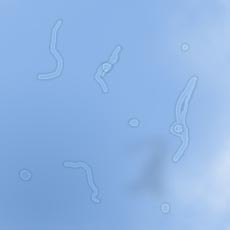‘What a loss to spend that much time with someone, only to find out that they are now a stranger.’ —Eternal Sunshine of the Spotless Mind (2004)
The present studies investigated the relationships between men’s perceived risk of experiencing sperm competition (i.e., when the ejaculates of two or more men simultaneously occupy the reproductive tract of a single woman), and their use of strategies to detect, prevent, and correct their partner’s sexual infidelity.
We investigated these associations using self-reports provided by men (Study 1, n = 113), partner-reports provided by women (Study 2, n = 136), and dyadic reports (Study 3, n = 103 couples).
The results of these studies indicated that the attractiveness of women was consistently associated with men’s use of benefit-provisioning mate retention behaviors (e.g., buying expensive gifts for one’s partner, showing signs of physical affection) and semen-displacing behaviors (e.g., deeper copulatory thrusting, more thrusts during copulation), whereas the infidelity risk of women was often associated with men’s use of cost-inflicting mate retention behaviors (e.g., threatening to end the relationship, monopolization of partner’s free time).
{ Evolutionary Psychology | Continue reading }
Previous work provides evidence of adaptations to sperm competition in men. For example, men’s testes size relative to body weight is larger than for the monandrous gorilla, which experiences very low sperm competition risk. However, men’s relative testes size is smaller than that of chimpanzees, whose polygynandrous mating system generates substantial sperm competition. […]
Several studies provide evidence that men unconsciously increase sperm number in an ejaculate when they are at greater sperm competition risk. Specifically, men who spent a greater proportion of time apart from their partners since the couple’s last copulation (time during which a man cannot account for his partner’s sexual behavior) produce more sperm in their next in-pair copulatory ejaculate. […]
Researchers have also theorized that the morphology of the human penis suggests an evolved function as a semen displacement device. […]
Both sexes reported that men thrust more deeply and more quickly at the couple’s next copulation when they experienced contexts in which sperm competition is more likely to occur. […] Goetz and colleagues also found that as sperm competition risk increased, men performed more copulatory behaviors that might act to displace the sperm of a potential rival that may be present (such as more thrusts and deeper thrusts during copulation). […]
Symons (1979) argued that women’s orgasm and associated physiological structures such as the clitoris are byproducts of selection on male genitalia and orgasm. […] Research also indicates that orgasm increases the retention of sperm. […] ancestral men who were particularly interested in the occurrence of their partner’s copulatory orgasm may have been more successful in the context of sperm competition.
{ Personality and Individual Differences (2010) | Continue reading }
The infidelity-detection hypothesis for oral sex proposes that men perform oral sex to gather information about their partner’s recent sexual history. […] men at a greater recurrent risk of sperm competition expressed greater interest in, and spent more time performing, oral sex on their partner
{ Personality and Individual Differences (2012) | Continue reading | More: Is Cunnilingus-Assisted Orgasm a Male Sperm-Retention Strategy? }
























